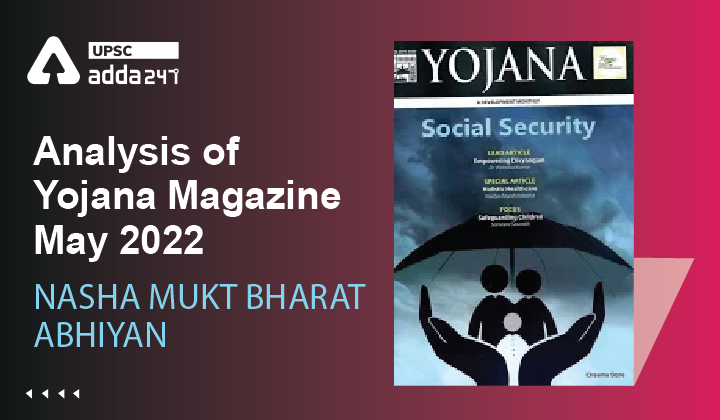Table of Contents
NASHA MUKT BHARAT ABHIYAN
Relevance
”GS 2: Government Policies & Interventions, Health”
Introduction
- To tackle the issue of Substance Abuse and a vision to make India Drug Free, Nasha Mukt Bharat Abhiyaan (NMBA) was launched on 15th August 2020, in 272 Districts identified as most vulnerable in terms of usage of drugs in the country.
- These vulnerable districts were identified on the basis of findings from the Comprehensive National Survey and the inputs provided by the Narcotics Control Bureau (NCB).
- In the last three decades (following the inception of the NDPS), the Ministry of Social Justice and Empowerment has conducted two nationwide drug surveys, published in 2004 and 2019. The results of these surveys suggest that drug use in India continues to grow unabated.
A constitutional & International Liability
- As enshrined in the Indian constitution (Article 47) and being one of the signatories of the United Nation’s International Conventions, India has the onus act to eliminate the use of illicit drugs, develop measures to prevent drug use and ensure the availability of treatment for people with drug use disorders.
- India has adopted the three-pronged strategies – supply, demand and harm reduction.
About NMBA
- The Abhiyaan is a three-pronged attack combining the supply curb by Narcotics Control Bureau, Outreach and Awareness and Demand Reduction effort by Social Justice and Empowerment and treatment through Health Department.
- Youth, Educational Institutions, Women, Children, and Civil Society Organizations/NGOs are envisioned as major target populations and stakeholders of the Nasha Mukt Bharat Abhiyaan.
Key Objectives Of NMBA
Nasha Mukt Bharat Abhiyaan intends to reach out to the masses and spread awareness about substance abuse through various activities like:
- Awareness generation programmes
- Focus on higher educational Institutions, university campuses and schools
- Reaching out to the Community and identifying dependent population
- Focus on counselling and treatment facilities in hospitals and rehabilitation centres that have been geo-tagged
- Capacity building programmes for service providers
What has been achieved so far?
- Since its launch, a wide range of activities have been conducted throughout the country that have fostered participation from all quarters of society and stakeholders.
- District Level Nasha Mukt Committees which are headed by the District Collector/Magistrate charted out, planned and taken the lead in the implementation of the Abhiyaan in their respective districts.
- Nasha Mukt Bharat Abhiyaan is operational with the involvement of more than 500 voluntary organizations across the country, which are assisted financially under the National Action Plan for Drug Demand Reduction (NAPDDR) scheme of the Ministry of Social Justice & Empowerment.
Conclusion
India has taken early and decisive steps to address drug problems. Though the government has an over-encompassing blueprint, committed workforce and several dedicated programmes and policies at its disposal, there is a need to improve the current programmes (to address the unmet needs), to have a coordinated effort between Ministries, incurring uniformity at the policy level, to make scientifically informed choices and to strengthen the supply reduction chains.



 TSPSC Group 1 Question Paper 2024, Downl...
TSPSC Group 1 Question Paper 2024, Downl...
 TSPSC Group 1 Answer key 2024 Out, Downl...
TSPSC Group 1 Answer key 2024 Out, Downl...
 UPSC Prelims 2024 Question Paper, Downlo...
UPSC Prelims 2024 Question Paper, Downlo...





